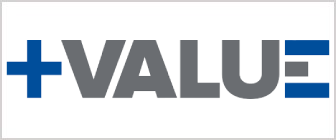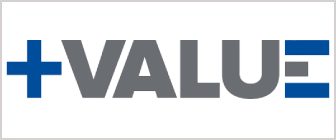By Martín Ramos
The tax treatment of fixed indirect costs in periods of stoppage is a crucial issue for industries such as mining, fishing and real estate, where operational interruptions are frequent due to seasonal, regulatory or market factors. The proper determination of the computable cost and its impact on the income tax base requires a rigorous analysis that combines current regulations with applicable accounting principles.
In this context, the treatment of production costs and cost of sales in the industrial sector has significant tax implications that must be addressed with technical and legal precision. According to Article 20 of the Consolidated Text of the Income Tax Law, approved by Supreme Decree No. 179-2004-EF, gross income is determined from the income obtained in the taxable year, deducting from them the computable cost of the goods transferred. This definition raises key questions as to how fixed indirect costs during periods of inactivity should be considered, which has generated debates in tax doctrine and practice.
In accordance with the mentioned rule, total net income is determined by subtracting from gross income items such as returns, rebates, discounts and other adjustments recognized in market practices. On the other hand, the computable cost includes the acquisition, production or construction cost, as well as the value of income to equity or the last inventory value determined in accordance with the law, duly adjusted according to the rules of price-level restatement. However, in no case may interest be considered part of the computable cost.
Article 20.2 of the Income Tax Law defines the cost of production as including direct materials used, direct labor and indirect manufacturing or construction costs. In the same sense, paragraph a) of Article 11 of the Income Tax Law Regulations, approved by Supreme Decree No. 122-94-EF, specifies that the computable cost in the transfer of goods can be determined considering its acquisition, production, construction or the value of entry to the patrimony or the last available inventory.
Likewise, the First Final Provision of Supreme Decree No. 134-2004-EF establishes that “indirect manufacturing or construction costs” should be understood as “indirect production expenses” according to the International Accounting Standard (IAS) on inventories. IAS 2 - Inventories states that the cost of inventories includes both acquisition and transformation costs and other costs necessary to bring the goods to their present condition and location. Transformation costs, in turn, include those directly related to the units produced, such as direct labor, fixed and variable overhead costs.
In this context, fixed indirect costs, such as maintenance of buildings and equipment, must be allocated to production considering the normal capacity of the facilities, while variable indirect costs are distributed according to the actual level of use of the means of production. The jurisprudence of the Tax Court has clarified this treatment in various resolutions, such as No. 00898-4-2008 and 11969-3-2014, which establish that only those indirect production costs that effectively contribute to the location and condition of the product for sale can be incorporated to the cost of inventories.
On the other hand, Resolution No. 00261-1-2007 specifies that the recognition of an expense is subject to it having been accrued and being reliably determinable. If a future economic benefit is expected, the amount should be recognized as the cost of the asset; otherwise, it is recorded as an operating expense for the year. In the same line, Resolution No. 00925-3-2020 establishes that the normal capacity of a company must be calculated taking into account the average of several periods, considering the loss of capacity generated by maintenance or foreseeable interruptions.
If this regulatory and jurisprudential framework is applied to different sectors, it is possible to identify the fixed indirect costs that are part of the production process in each industry. In the fishing sector, these costs include those related to catching, processing and storing fish, as well as those derived from the seasonality of the activity. In particular, fixed indirect costs include the maintenance of vessels and fishing equipment, vessel and crew insurance, permit and license expenses, processing plant maintenance, and security and vigilance costs.
In the mining sector, production costs range from exploration and mine development to mineral extraction and processing, including environmental and remediation costs. In this case, fixed indirect costs include infrastructure maintenance, machinery and equipment depreciation, insurance on facilities and equipment, as well as environmental costs related to monitoring, waste management and water treatment.
In the real estate sector related to the sale of lots, the cost of production includes land acquisition, urbanization, infrastructure development, and administrative and financial costs associated with marketing. Among the fixed indirect costs are machinery amortization, sales personnel salary costs, expenses for permits and licenses, real estate insurance, and maintenance of common infrastructure, such as access roads, street lighting, and parks.
A key aspect in the tax treatment of fixed indirect costs is their recognition in periods of stoppage. In the fishing industry, interruptions are frequent due to biological closures, adverse weather conditions or regulatory restrictions. However, during these periods, companies must continue to bear fixed costs, such as vessel maintenance, insurance and administrative salaries. If these stoppages are considered part of normal operating capacity, such costs should be recognized as part of the cost of production. However, if the interruption exceeds the usual margins of inactivity, these amounts could be reclassified as expenses for the year, thus reducing the computable cost of goods produced.
In mining, stoppages can be due to social conflicts, environmental regulations, fluctuations in metal prices or extreme weather conditions. Even in these cases, companies continue to incur fixed indirect costs related to safety, security, equipment maintenance and compliance with environmental obligations. If these costs are part of an operational plan that includes interruptions as part of the production cycle, they can be part of the cost of production. However, if the stoppage is prolonged and unexpected, they should be recognized as an expense for the year.
In the real estate sector, the marketing of lots may be affected by delays in obtaining permits, declines in market demand, or weather factors that delay urbanization. In spite of this, companies must assume fixed costs such as financial interest, maintenance of developed areas, advertising, and administrative expenses. If these costs are directly related to construction and are part of the normal operating cycle, they should be included in the cost of production. However, if the project suffers an extraordinary stoppage, such as a prolonged economic crisis or legal problems, these costs could be reclassified as expenses.
In conclusion, the tax treatment of fixed indirect costs in work stoppage scenarios depends on whether the company can demonstrate that they are part of the cost of production and whether the normal capacity has been correctly determined. For this, it is essential to have adequate documentation, technical reports and well-defined accounting policies to support the allocation of these costs. The jurisprudence of the Tax Court provides a valuable frame of reference, but its effective application in each sector will depend on the nature of the activity, the foreseeability of stoppages and the evidence that the company can present to the Tax Administration.


